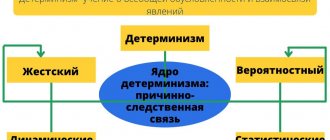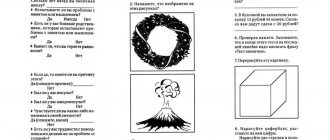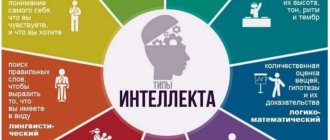Description
This term denotes a set of talents and skills with the help of which an individual manages to become successful when interacting with other people and to find his place in the world. It includes 3 main skills:
- The ability to accurately understand the behavior of others, the reasons for a particular step.
- The ability to be aware of my own actions (why am I behaving this way, what goal am I pursuing, can I achieve the desired result).
- The ability to act according to a specific situation, taking into account all its features and nuances.
In many ways, this skill overlaps with the so-called emotional intelligence, which allows you to correctly identify and evaluate the feelings of others. The simultaneous development of these two abilities at once is guaranteed to increase the effectiveness of interaction, but if innate talent is extremely important for emotional intelligence, then social is perfectly trainable.
Processing the results
To process the results, an answer form, a processing key, and standard tables are used to determine standard values.
Answer forms are processed using special keys. Results are calculated for each subtest separately and for the entire test as a whole. The results for individual subtests reflect the level of development of one (or several) abilities of the cognitive behavior factor. The result of the test as a whole is called a composite score and reflects the overall level of development of social intelligence.
The amounts of “raw points” for each subtest, calculated using the “keys,” are recorded in the first line of the Final Table on the Answer Form. For each correct answer, the subject is awarded one point. “Raw points” are converted into standard points using standard tables and recorded in the second line of the Final table.
The composite score is the sum of the raw scores for each subtest. The resulting amount is also converted to a standard value.
Translation of “raw” assessments into a standard scale makes it possible to compare the degree of expression of individual abilities to cognition of behavior (social behavior) in a given subject (intra-individual diagnostics with the construction of a profile of social intelligence), as well as to compare the level of development of abilities to cognition of behavior in different people (intra-individual differential diagnostics).
Key
If the answer matches the key, the subject receives 1 point on the corresponding scale. If there is a discrepancy - 0 points.
| № | Subtest 1 | Subtest 2 | Subtest 3 | Subtest 4 |
| 1 | 2 | 1 | 3 | 4 |
| 2 | 2 | 4 | 3 | 3 |
| 3 | 2 | 3 | 3 | 3 |
| 4 | 3 | 3 | 1 | 2 |
| 5 | 1 | 2 | 1 | 1 |
| 6 | 3 | 1 | 2 | 1 |
| 7 | 3 | 2 | 2 | 4 |
| 8 | 3 | 2 | 1 | 1 |
| 9 | 3 | 1 | 2 | 1 |
| 10 | 3 | 4 | 3 | 2 |
| 11 | 3 | 1 | 1 | 1 |
| 12 | 1 | 1 | 2 | 2 |
| 13 | 1 | 2 | 2 | |
| 14 | 2 | 4 | 1 | |
| 15 | 4 |
Normative tables for determining standard values (for the age group 18-55 years)
| Standard values | Subtests | Composite score | |||
| 1 | 2 | 3 | 4 | ||
| 1 | 0 – 2 | 0 – 2 | 0 – 2 | 0 – 1 | 0 – 12 |
| 2 | 3 – 5 | 3 – 5 | 3 – 5 | 2 – 4 | 13 – 26 |
| 3 | 6 – 9 | 6 – 9 | 6 – 9 | 5 – 8 | 27 – 37 |
| 4 | 10 – 12 | 10 – 12 | 10 – 11 | 9 – 11 | 38 – 46 |
| 5 | 13 – 14 | 13 – 15 | 12 | 12 – 14 | 47 – 55 |
Approaches to definition
Everyone defines the nature of the emergence of skills differently. I will note three main settings:
- Social intelligence is one of the cognitive abilities of a person, ranking alongside mathematical talents or the ability to quickly master foreign languages. In this case, it can be considered congenital.
- Social intelligence is more of an acquired experience; absolutely every person can achieve it with some training, regardless of initial knowledge.
- This is a certain personality and character trait that initially either exists in an individual or is absent in him.
Thorndike introduced the term social intelligence back in 1920, in which several psychological schools were actively developing - behaviorist, Soviet, psychoanalytic. Each of the three approaches listed is valid and should be used as a basis for the development of knowledge.
SQ Research
Theories
In 1904, Spearman proposed that social intelligence was based on two factors:
- One of them is the “G” factor, which is common and is relevant to all intelligence tests.
- The second factor is "S". This designates all other, separate factors associated separately with each of the tests.
Wedecom and Spearman conducted a factor analysis and identified three main factors of intelligence:
- G – is general;
- V – verbal;
- U – social.
Guilford became the author of the multi-textured cubic model. According to it, mental action consists of three components:
- Contents.
- Operations.
- Product.
Each of these points, in turn, is divided into categories. So, the content could be:
- symbolic – which includes letters and numbers;
- figured (spatial);
- behavioral - including feelings, motives, thoughts, attitudes and other traits that influence the behavior of an individual.
Transactions include the following five categories:
- cognition;
- memory;
- divergent production (the generation by the psyche of various ways of performing an action);
- convergent production (production of one correct solution);
- assessment (comparison with a given criterion).
Product, the third component of intelligence in Guilford's model, contains 6 categories:
- Units.
- Classes or groups of units.
- Relationships are connections between units.
- Systems (organized or structured information).
- Transformations (transformation of information).
- Conclusions (extrapolations in the form of predictions and assumptions) (Guilford J., 1981).
Garner became the author of the theory of multiple intelligences, dividing it into seven parts:
- Linguistic - manifests itself when a person writes or reads a text.
- Logical-mathematical – solving mathematical problems, constructing logical reasoning and proof.
- Spatial – responsible for moving in space.
- Musical – used when a person sings, composes, or listens to music.
- Bodily-kinesthetic – associated with the location of a person and objects within space.
- Interpersonal – the ability to communicate and understand the personalities of others.
- Intrapersonal – acts as the basis of self-knowledge.
Piaget believes that a single mechanism is responsible for recognizing the social and physical worlds.
Jensen says that generalization of information from social and physical reality occurs through abstract intelligence.
The theory of Sternberg and Sternberg suggests that there is a so-called success intelligence , which includes analytical, creative and practical thinking.
Kenny's theory of interpersonal perception divides it into:
- Self-perception.
- Perception of another person.
- Metaperception is an understanding of how another perceives the subject of cognition.
The influence of personality traits
Guilford's behavioral cognition includes:
- Cognition of behavioral elements - isolating verbal and non-verbal components from the context.
- Behavior classes - recognition of common properties in the flow of information about behavior.
- Behavioral relationships - understanding the relationships between information units about behavior.
- Systems of behavior - understanding the logic of the development of situations, the interaction of others and the meaning of their behavior and actions.
- Behavioral transformations - understanding the underlying meanings of similar verbal and nonverbal behavior in different circumstances.
- Results of behavior - the ability to see in advance the consequences of behavior based on the information received.
Functions of social intelligence:
- Cognitive – SQ – a tool for understanding physical and social realities.
- Accumulative – implemented in social memory.
- Managerial – here social intelligence is the most important part of social management.
- Communicative – ensures mutual understanding within the collective intellect and between thought groups.
- Regulatory-coordinating - consists of regulating and coordinating social efforts. groups when achieving goals.
- Normative-value – representation of socially significant norms and values correlated with the actions of social groups or an individual.
- Prognostic – involves effective social forecasting.
- Heuristic – introducing new things into public life.
- Problem-constructive – social intelligence acts as a means of analysis for solving problems.
- Identification - self-reflection of the social community occurs, its self-identification, understanding of interests.
- Implementation – identifies the rational and irrational based on the type of rationality of the social community.
- Social inheritance – ensures the intellectual continuity of generations.
Relationship with a sense of humor
According to ongoing research, people with a good sense of humor have a high IQ level, especially those who love dark humor.
To come up with a joke, a person uses his mind and emotional abilities. According to the results of the analysis, jokers have more developed verbal and non-verbal intelligence, they are much less susceptible to mood swings and aggression. The ability to make people laugh indicates the development of emotional intelligence . It is believed that people with a good sense of humor are more attractive.
Historical reference
The history of social intelligence research began in the early 20th century, when Edward Thorndike first coined this term to define a person's ability to achieve success and effectiveness when interacting with other people in a variety of situations. Somewhat later, his idea was picked up by the Briton Philip Vernon. He expanded the concept to conclude that individuals have a responsibility to get along with each other.
In 1937, American psychologist Gordon Allport, based on the judgments of his colleagues, defined social intelligence as the ability to quickly and clearly judge the people around him and predict their likely behavior. In contrast, Auguste Comte and Hans Eysenck believed in the social nature of the phenomenon, considering it the individual’s adaptation to life in society.
The first attempt to measure the level of mental processes was made by the American psychologist Joy Gilford. He developed a test that is still used today. We will talk about it in detail a little later, as well as about the Eysenck model, which also became very popular.
Age characteristics
One of the most important factors that influences the characteristics of social intelligence is the age period. A child requires one approach, and a young man requires a completely different one. It is very important to take into account ontogenesis and give a person the opportunity to develop intelligence naturally.
The development of SI continues throughout life.
Children
Preschool or primary school age requires regular participation in role-playing games. This will stimulate the growth of the level of social intelligence. It is equally important during this period to allow the child to spend time with peers. If he has at least a few friends, this will completely eliminate social backwardness in the future.
The type of teacher who teaches the child in kindergarten or school is also of great importance. In the first case, it is necessary that he stimulates children to play those games that require active communication. In the second, it is important that it does not limit the behavior of children during recess and allows them to run, communicate and interact with each other as much as possible. His competence is the most important factor in the development of a child. With the wrong approach to education, the development of SI can be very low. Problems at this age are the main cause of antisocial behavior in adulthood.
Teenagers
Adolescence is the most difficult age. Parents find it difficult to cope with children who have begun to grow up. It is important not to spoil everything, because... During this period, a tendency to communicate, self-awareness, and understanding of the people around them are formed. In order for everything to go as smoothly as possible, parents must understand that a teenager must independently decide how and with whom to communicate. Violation of his personal space or desires can lead to a decline in social intelligence. If you do this regularly, it will be low.
Boys
During adolescence, the ability to anticipate the results of one’s actions and the skill of predicting other people’s behavior in various situations are formed. At this age, gender differences between people are of great importance.
Boys develop verbal communication skills much faster, while girls develop sensitivity to relationships with a good perception of non-verbal communication, which makes it much easier for the latter to assess the tone and coloring of the interlocutor’s words. Problems with communication at this age can be caused by improper upbringing in childhood, when the child’s teacher unnecessarily limited him and deprived him of the opportunity to improve his intelligence, both mental and social. Wrong influence on older children rarely leads to serious social deviations.
Mature
An adult always continues to develop in the social sphere. He begins to realize his mistakes, analyze them, and draw the necessary conclusions. The best characteristic of this age is wisdom. This is what appears in a person with maturity. With proper social development, the individual understands the limitations of knowledge and also learns to promptly identify all sorts of problems. People with developed social wisdom are much more successful compared to others.
Science psychology
Like any other talents and skills, mental performance can be measured using tests. At the same time, mental indicators are recorded from the point of view of the development of various abilities, the main ones among which are:
- The ability to recognize the internal state of another person.
- Interpret the connection between it and behavior.
- React flexibly to changes.
- Predict options for the development of the situation.
- Behave in accordance with the information received and processed.
An individual who has intellectual qualities can determine the desires, needs and emotions of his interlocutor and structure his own behavior so that his partner feels comfortable. As a result, an effective communication model is formed and better results are achieved.
Psychologist Daria Milai
Make an appointment
Levels of social intelligence
The ability to understand the people around you can be developed, and for some it is easier and faster due to their innate talents, while for others it requires a lot of effort. At the same time, skill can be measured using several techniques. Main degrees of development:
- Low social intelligence – suggests that a person does not know how to effectively interact with the world around him. His behavior can be called inadequate, and his attractiveness in the eyes of other individuals is seriously reduced.
- Average - means that in most situations a person is able to understand his interlocutor and adjust his behavior to his needs, with rare exceptions - when it is necessary to find a common language with someone who does not reciprocate.
- High - assumes that an individual can establish contact with absolutely any partner, but no more than 11% of all people on Earth have such skills.
In any case, you can develop your abilities, although you will have to make a lot of effort.
How to develop social intelligence: several effective ways
If you want to increase the level of your social intelligence, then you need to remember in the smallest detail this or that unsuccessful situation from the point of view of social experience, analyze it, draw appropriate conclusions and continue to move on. You shouldn’t get hung up on what happened, because this situation happened in your life only so that you learn the necessary lessons, thanks to which you will develop and improve.
There are many ways you can improve your social intelligence. Let's look at the most popular and effective ones!
Develop your social sensitivity
Social sensitivity or empathy can rightly be called the basis of social intelligence. To improve your social sensitivity, you need to forget about your selfishness as often as possible and focus on the needs of other people.
When you have some free time, start observing the actions of this or that person. This could be your close friend, relative or colleague, or a complete stranger. What is your “object” doing? What is he doing? For what purpose is he doing this? Why does he act this way and not otherwise?
Then analyze the behavior of the “object” of your observation: where is he going, what thoughts are in his head now, what feelings is he experiencing now, is he happy or sad, is he in a calm state or is he nervous, etc.
You can also observe the behavior of those people who conduct a dialogue with each other. Try to guess what exactly they are talking about, what emotions they are experiencing, why they behave this way, etc.
Once you increase the level of your social sensitivity, you will be able to easily, like the main character of the series “Lie to Me,” “read” information from people’s faces. You will learn to better understand exactly what kind of people you will be dealing with.
Pick up on other people's moods
If you learn to grasp the mood of other people, you can easily and simply determine whether at the moment it is worth starting a conversation that is important to you, discussing this or that problem with a person, etc. You will learn to understand whether your social impact is timely or whether you should wait to resolve some issue because the person you need is not in the right frame of mind.
As a child, each of us, by the slam of the front door and the steps of mom or dad, knew perfectly well whether it was worth talking about another bad grade in math right now, or whether it was better to wait a little until our parents rested after a hard day at work and their mood improved. As many people grew up, this skill simply atrophied because they did not develop it.
A person who is well versed in the mood of other people can quickly and effectively adjust his behavior so as not to get into an awkward situation and maintain his own dignity in the eyes of other people.
Manage your emotions
Any of our emotions is a horse harnessed to a cart called “everyday life”. If you don't control the horses, they will start taking you not where you want, but where they want. Is it good or bad? Everyone decides for themselves, but it is not a fact that horses will take you to a place where you will feel happy, successful, spiritually developed and self-sufficient. So take the reins and start managing your emotions, otherwise the quality of your life will never improve!
As soon as you feel that some negative emotion (anger, sadness, sadness, anger, rage, sorrow, etc.) is taking over you and making you feel unhappy, insulted, humiliated and worthless, try looking at yourself and the current situation objectively and as if from the outside.
Look at yourself in the mirror and tell yourself what emotion you are experiencing now and why this emotion is so important to you that you are ready to spend your inner energy and personal time on it? Was a saleswoman rude to you in a store? A rude driver not only cut you off, but also took the time to stick his head out the window and say a few not very pleasant words to you? Retell to yourself the situation that caused the negative emotion, and then realize that these people have nothing in common with you! Some of them have had a bad day since the very morning, some are simply toxic narcissists, etc. Why should you waste your resources on these people and experience negative emotions because of them?
If a negative emotion was caused by a person you know, then think carefully about the purpose for which he did it. Emotions are an excellent tool for various manipulations. And if one of your relatives, friends or acquaintances constantly gives you emotional swings, then you should think about refusing to communicate with such a person or reducing communication with him to an absolute minimum.
Do not forget that a person who knows how to control his emotions not only has highly developed social intelligence and will never become a victim of a manipulator, but will always be in harmony with himself and the outside world.
Techniques
I will list the main ways of developing and measuring mental activity within the framework of the most popular psychological concepts.
G. Eysenck's model of the structure of intelligence
This British psychologist suggested that any person has three different types of intellectual formation, which determine his skills. This is about:
- Biological, that is, innate information processing skills. They originate directly in the structures of the brain and form the basis of all knowledge that will be acquired by an individual in the course of life.
- Psychometric, that is, the very indicators that are measured using tests.
- Social – formed during socialization, developing gradually and largely determined by the environment and people.
Intellectual abilities can simultaneously include the development of cognitive processes such as memory, attention, the ability to reason, adapt, and interact.
J. Guilford's model of the structure of intelligence
This concept is more complex. The intellectual manifestations of an individual are represented in it in the form of a cube consisting of many small cubes. This model includes more than 100 factors that determine the degree of development of a person's skills, but they are all based on three variables that help determine how information is processed:
- Data content.
- Mental actions.
- Results.
It is important to note that among all the “cubes” identified by the technique, mental activity lies in only one small column - the ability to cognize and understand behavior. This little piece reveals 6 separate factors:
- The ability to highlight verbal and non-verbal information from an interlocutor.
- Perceive something common in the entire data stream.
- Understand relationships.
- See the logic of the development of situations.
- Notice changes.
- Predict possible consequences.
It is these factors that are measured using test methods and ultimately determine the final level of development of social intelligence, which you can find out if you take the online Guilford test.
Description of the technique
The technique includes four subtests, three of which are based on non-verbal stimulus material and one on verbal. Subtests diagnose four abilities in the structure of social intelligence: knowledge of classes, systems, transformations and behavioral results. Two subtests also have secondary weights in their factor structure relating to the ability to understand the elements and relationships of behavior.
The technique is designed for the entire age range, starting from 9 years.
The stimulus material is a set of four test notebooks. Each subtest contains from 12 to 15 tasks. Time for subtests is limited.
Brief description of subtests
Subtest No. 1. “Stories with completion”
The subtest uses scenes with the comic book character Barney and his loved ones (wife, son, friends). Each story is based on the first picture, depicting the actions of the characters in a certain situation. The subject must find, among three other pictures, the one that shows what should happen after the situation depicted in the first picture, taking into account the feelings and intentions of the characters.
The subtest measures the factor of cognition of the results of behavior, that is, the ability to foresee the consequences of the behavior of characters in a certain situation, to predict what will happen in the future.
Subtest No. 2. “Expression groups”
The stimulus material of the subtest consists of pictures depicting non-verbal expression: facial expressions, postures, gestures. The three pictures located on the left always express the same feelings, thoughts, and human states. The test subject must, among the four pictures located on the right, find the one that expresses the same thoughts, feelings, and human states as the pictures on the left.
The subtest measures the factor of cognition of classes of behavior, namely the ability to make logical generalization and identify common essential features in various non-verbal human reactions.
Subtest No. 3. “Verbal Expression”
In each task of the subtest, a phrase is presented that one person says to another in a certain situation. The subject must, among the other three given communication situations, find one in which this phrase will take on a different meaning and will be pronounced with a different intention.
The subtest measures the behavioral transformation cognition factor, that is, the ability to understand the changing meaning of similar verbal reactions of a person depending on the context of the situation that caused them.
Subtest No. 4. “Stories with additions”
In this subtest, characters from the comic book “Ferdinand” appear, included in family, business and friendly contacts. Each story consists of four pictures, and one of them is always missing. The subject must understand the logic of development, the plot of the story and, among the four other pictures offered for the answer, find the missing one.
The subtest measures the factor of cognition of behavioral systems, namely the ability to understand the logic of the development of interaction situations and the meaning of people's behavior in these situations.
Research from domestic psychologists
Margarita Bobneva was the first to describe the term when she studied the formation of personality as a part of society in 1979. She believed that the impetus for the emergence of skills is the socialization that every individual living in human society undergoes.
Face-to-face consultation
What are the features and advantages of face-to-face consultation?
Find out more
Skype consultation
What are the features and benefits of Skype consultations?
Find out more
Another famous psychologist, Yuri Emelyanov, explored the concept within the framework of the psychology of practical activity. He believed that in order to develop communication abilities, it is necessary to actively learn, and this process should last constantly and continuously.
Alla Yuzhaninova went further in her research and came to the conclusion that social intelligence is just part of the intellectual structure, which also includes practice and logic. To improve your communication skills, you need to train all 3 areas.
Diagnosis of social intelligence
The interest of specialists in studying the relationships of society led to the fact that already in 1928 the first multifactor test was prepared, designed to determine the level of mental development of a particular individual. Its author was T. Khan. The technique evaluates several components:
- Judgments when participating in any situation.
- Memory.
- Ability to observe behavior.
- Recognition of internal states.
The method will determine whether a person knows how to interact with others and how effective this interaction is. However, the test did not become popular, but provided the necessary basis for the preparation of another research method, much more well-known and accurate. We'll talk about it a little later.
Methodology for identifying social intelligence from Guilford
It was this testing that quickly gained approval from other specialists involved in the study of communication abilities. It is still used today as the main method of work.
Ask a question
The measurement is carried out using 4 separate subtests, 3 of which are performed using non-verbal material. The purpose of testing is to determine whether an individual has special skills:
- Knowledge of classes and systems.
- Transformation of information.
- Behavioral results.
You can get tested as early as 9 years of age. At the same time, the time to solve all the proposed problems is limited. In our country, it is not the original, but an adapted technique that is used. It was prepared by E.S. Mikhailova, based not only on the work of the author, but also on the peculiarities of our mentality.
Levels
Immediately after the scientific community was able to describe social intelligence, it decided to develop a scale for dividing it into levels. For this purpose, D. Gilforod created a special psychological test. He tested the speed and originality of solving problems of varying complexity. This made it possible to give an accurate answer to how savvy the subject is in the social sphere. Based on the results, it was possible to identify three levels, each of which describes the development of different social intelligence.
In Russia, a technique based on the Guilford test, created by E. S. Mikhailova, has become widespread.
Short
People with low levels of social intelligence constantly experience various difficulties. As a rule, they are caused by a person’s behavior, and he himself does not understand it. Such people have a deviant behavior and are always guided by instincts, and most of their actions are caused by impulses. They are unable to get along with other people because... Even with the good development of relationships of any kind, at a certain moment their peculiarities appear, which completely excludes continued communication with the person and leads to misunderstandings or quarrels.
They are unable to solve such problems on their own, which is why people are often forced to resort to the help of loved ones.
Average
Those with an average level of SI act in a patterned manner. In everyday affairs, they almost always achieve their goals. Communication with people is not difficult. However, it is difficult for such a person to cope with unusual or complex tasks, which is why he can simply abandon this or that idea and continue to live according to his usual pattern.
High
A socially intelligent person easily copes with the most difficult tasks. They almost always come out of intractable situations as winners. It is very easy for them to make acquaintances, communicate with people and manipulate them, changing their thoughts, views, desires. Such people are leaders.
Development
The ability to interact with other people is truly a key aspect for every person living in society. Without it, an individual is not able to study normally at school, get a profession, work, or start a family. Naturally, many are concerned with the question of how to improve skills if innate talents are not enough.
There really is a way, but it also affects other forms of intellectual activity, including emotional activity. Training should take place constantly and everywhere. In this case, it is fixed at the cognitive level and allows adaptation.
Constantly being in the company of other people, copying their behavior, trying to understand their feelings and emotions, a person begins to react more adequately to the situations happening around him and, in the end, gives exactly the reactions that are expected of him. His attractiveness in the eyes of society is growing.
People with high social intelligence refrain from making judgments
Whether we're talking about the person who holds the door for them, waits for them in the elevator, or serves them coffee, people with high social intelligence recognize and respect all of these people.
They do this because life has taught them that magic is everywhere and that absolutely anyone is capable of creating it. Not only that, but they also do it because they know the world is a small place—and humans have a funny knack of moving in and out of our lives.
Next time you leave the house, try this behavior of people with high social intelligence: put your phone aside and raise your head. Then be sure to smile and say hello to everyone you meet. You yourself will be surprised at how memorable it is for the person who receives your greeting. The explanation for this effect is quite simple: most people today are so worried about themselves that they cannot even understand that the secret to happiness lies right before their eyes.
How to develop social intelligence
In order to learn how to interact with others, you need to follow several rules. They cannot be called simple and easily digestible. On the contrary, some will require a lot of work, but will ultimately lead to the desired result. Here are the main principles:
- Learn to be more sensitive to other people. To do this, you need to constantly come into contact with them, observe them, try to understand them.
- Get to know the basics of nonverbal communication and read the emotions of others by their faces and gestures.
- Force yourself to hear what the other person is saying.
- Notice people's moods. This is difficult only at first glance, but in fact, even in childhood, a person’s mood was noted by random steps, a slightly stronger slam of the door and other factors.
- Sign up for acting classes. Interaction is a bit of a game, which is not for everyone.
- Record your own feelings and manage them.
- Be in public more often and don’t be shy about speaking.
- Get into the habit of playing board games - Mafia.
The younger a person is, the easier it is for him to learn to understand the behavior of others, so you should start working as early as possible.
How to develop skills?
Important. Skill development begins in the first year of life and continues into adulthood.
Then, from time to time, the formed social intelligence is adjusted in connection with current events.
Formation of SQ
Initial formation occurs in the family, then the influence of friends, relatives, preschool institutions, schools is added, then educational institutions plus the environment that accompanies each stage.
Periods of development
There are five stages of development. At the zero stage (presocial), the child is not aware of the differences, but gradually he begins to separate emotions, the feelings of others and his own:
- at the first stage, the ability to analyze words and behavior develops;
- on the second - empathic abilities, attempts occur to influence people and situations;
- on the third - there is an understanding of the inconsistency of people's behavior;
- on the fourth – the idea of human interaction is structured;
- on the fifth, skills are honed.
We talked about the formation, developmental features, methods of diagnosis and research and adaptation of children with disabilities here.
Levels
There are three levels: high, medium, low.
- In the first case, this means that the person has high skill in communicating and managing people, and controlling situations.
- In the second - patterned behavior, an average level of skills and knowledge necessary for successful interaction in society.
- In the third - destructive behavior, low efficiency, poor recognition of people's behavior.
SQ measurement problems
The first test to measure SQ was created by T. Khan. Later, the D. Guilford test appeared, which is still used today.
Attention. It must be said that tests are not an accurate assessment of this type of intelligence; today there are no ways to fully “measure” it.
Techniques
Recommendations for SQ development include special techniques. The most effective methods for increasing your SQ level include:
- empathy training;
- analysis of human behavior in videos/films;
- replaying situations;
- development of non-verbal skills;
- role-playing games.
It is necessary to develop abilities such as:
- memory;
- oratory;
- attention;
- analytics, etc.
General self-development will automatically have a positive effect on your SQ level.
Conditions
At the presocial stage, it is necessary to help the child achieve success in terms of separating the thoughts and feelings of other people from his own, and developing an interest in social interaction.
- At the first stage, it is necessary to pay attention to the development of subjectivism, to teach us to understand, first of all, ourselves, and only then those around us.
- At the second and third stages, you should pay attention to the ability to reflect, analyze the behavior and words of others, the ability to take the position of another, and cooperation.
- At the fourth stage, you need to continue to improve your skills and begin training that allows you to successfully interact in society (more practice).











